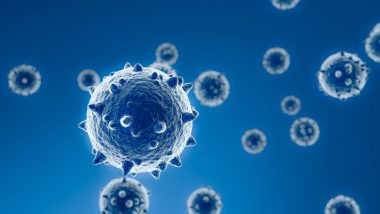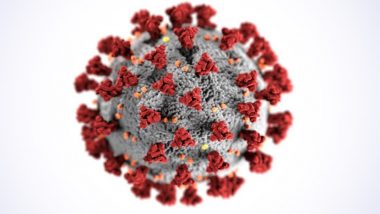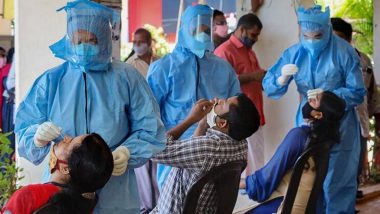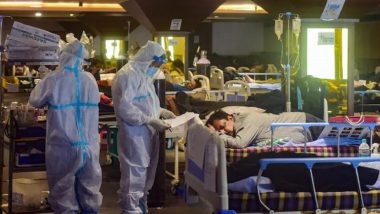Los Angeles, August 23: Humans are not the only species facing a potential threat from the novel coronavirus that causes COVID-19, according to a new study which says several critically endangered primates such as the Western lowland gorilla, Sumatran orangutan, and Northern white-cheeked gibbon may be susceptible to infection with the virus.
Scientists, including those from the University of California (UC) - Davis in the US, used genomic analysis to compare the structure of the ACE2 receptor protein which the novel coronavirus uses to enter cells across 410 different species of vertebrates, including birds, fish, amphibians, reptiles and mammals. Wolverines Return to Mount Rainier National Park in US After More Than 100 Years, Know More About This Rare Animal, the Largest Member of the Weasel Family (See Pics and Video).
According to the study, published in the journal PNAS, ACE2 is normally found in many different types of cells and tissues, including the cells lining the outer layer of the nose, mouth, and lungs.
Of the amino acid building blocks which make up ACE2, the scientists said 25 of these molecules in the protein are important for the novel coronavirus, SARS-CoV-2, to bind and gain entry into human cells.
In the study, they used the sequence of these 25 amino acid molecules, assessed how they interact with each other, and modelled its predicted protein structure. Using this model, the researchers evaluated how many of the 25 amino acids are found in the ACE2 protein of the different species.
"Animals with all 25 amino acid residues matching the human protein are predicted to be at the highest risk for contracting SARS-CoV-2 via ACE2," said Joana Damas, a co-author of the study from UC Davis. "The risk is predicted to decrease the more the species' ACE2 binding residues differ from humans," Damas said.
According to the researchers, about 40 per cent of the species potentially susceptible to SARS-CoV-2 are classified as "threatened" by the International Union for Conservation of Nature, and may be especially vulnerable to human-to-animal transmission.
"The data provide an important starting point for identifying vulnerable and threatened animal populations at risk of SARS-CoV-2 infection," said Harris Lewin, lead author of the study from UC Davis. "We hope it inspires practices that protect both animal and human health during the pandemic," Lewin said.
The study noted that several critically endangered primate species, such as the Western lowland gorilla, Sumatran orangutan and Northern white-cheeked gibbon, are predicted to be at very high risk of infection by the novel coronavirus.
It said marine mammals such as gray whales and bottlenose dolphins, as well as Chinese hamsters are also at high risk of catching the virus. Among domestic animals, the scientists said cats, cattle, and sheep were found to have a medium risk, while dogs, horses, and pigs have low risk for the virus binding to their ACE2 receptors.
"These species represent an opportunity for spillover of SARS-CoV-2 from humans to other susceptible animals. Given the limited infectivity data for the species studied, we urge caution not to over-interpret the predictions of the present study," the scientists wrote.
They cautioned that it is yet to be determined how this relates to infection and disease risk, but said for the species with known infectivity data, this correlation is high. Coronavirus Symptoms: When Should You Visit The Doctor? Expert Reveals the Common, Serious and Alarming Signs That You May Have COVID-19.
In documented cases of SARS-COV-2 infection in cats, dogs, hamsters, lions and tigers, the virus may be using ACE2 receptors, or they may use receptors other than ACE2 to gain access to host cells, they added.
According to the scientists, a lower propensity for binding could translate to lower propensity for infection, or lower ability for the infection to spread in an animal or between animals once established.
"Zoonotic diseases and how to prevent human to animal transmission is not a new challenge to zoos and animal care professionals," said study co-author Klaus-Peter Koepfli, senior research scientist at Smithsonian-Mason School of Conservation in the US.
"This new information allows us to focus our efforts and plan accordingly to keep animals and humans safe," Koepfli said. The scientists cautioned that the predicted animal risks are only based on computer simulations, and added that the actual risks can only be confirmed with additional experimental data.













 Quickly
Quickly




















